Visiting the Kruger Park in South Africa is an amazing experience, maybe something you dream about for a long time and do once in a lifetime. We just visited the park for a week with our South African friends. Here we have summarised everything you need to know, or wonder about.
Table of contents
Visiting the Kruger Park in South Africa
Have you thought about visiting the Kruger Park in South Africa? Or are you just curious about how everything works? We'll try to answer any questions you might have.
Where is the Kruger Park and how big is it?
Kruger National Park is located in the provinces of Mpumalanga and Limpopo, in north-eastern South Africa. The area is about 345 kilometres long and 54 kilometres wide, and its surface area is about the size of the country of Slovenia.
Why is it called the Kruger Park?
The Kruger Park is named after former President Paul Kruger, who opened the park in 1898. The park was first called the Sabie Game Reserve, but was renamed Kruger National Park in 1928.
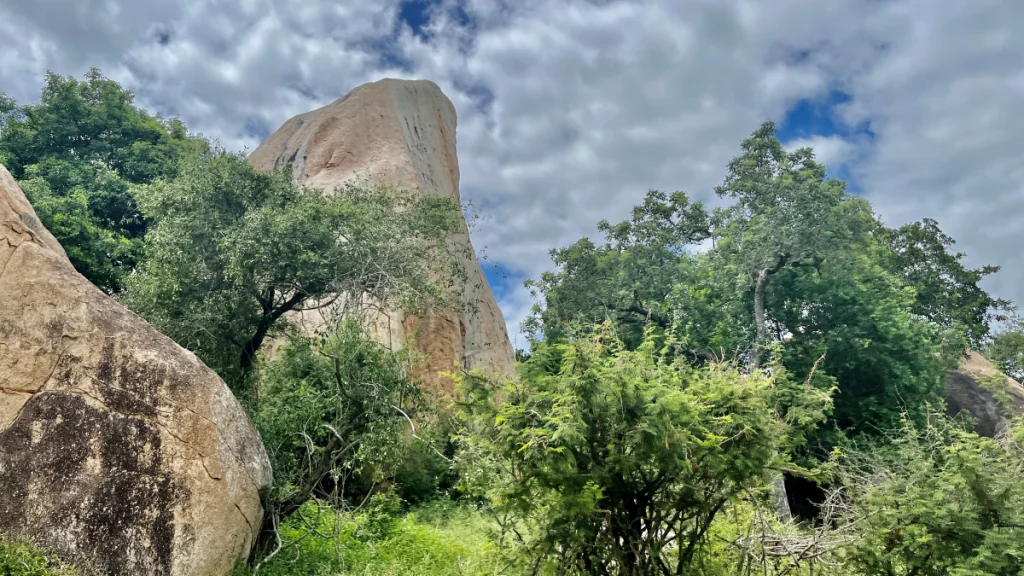
How to travel to the Kruger Park?
It is of course possible to book an organised trip through a travel agency. It is also possible to travel on your own.
You can fly to Kruger Mpumalanga International Airport (MQP), for example from Johannesburg, and rent a car on site. It is also possible to drive from Johannesburg, which takes about 6 hours. On the way you can stop at Blyde River Canyonto have a nice break with great views.
Keep in mind that you must arrive at your accommodation before the gate closes, which can be between 17:30 and 18:30, depending on the time of year.
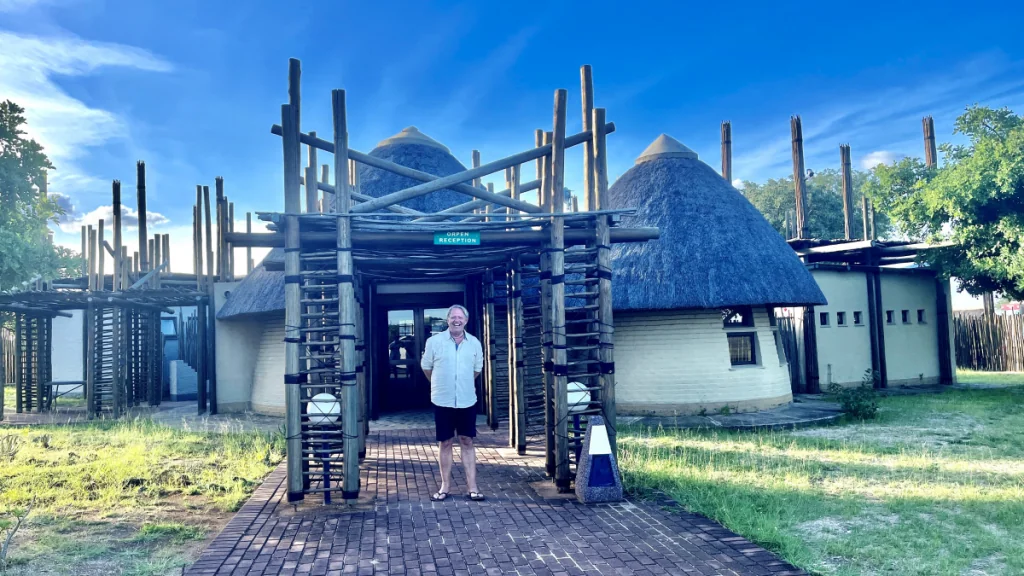
Which part of the Kruger Park is the best?
The Kruger Park is oblong in shape. The southern part has more rain and more wildlife, but here it is also more crowded with vehicles. We visited the southern part, via the Orpen entrance, and were very pleased with this.
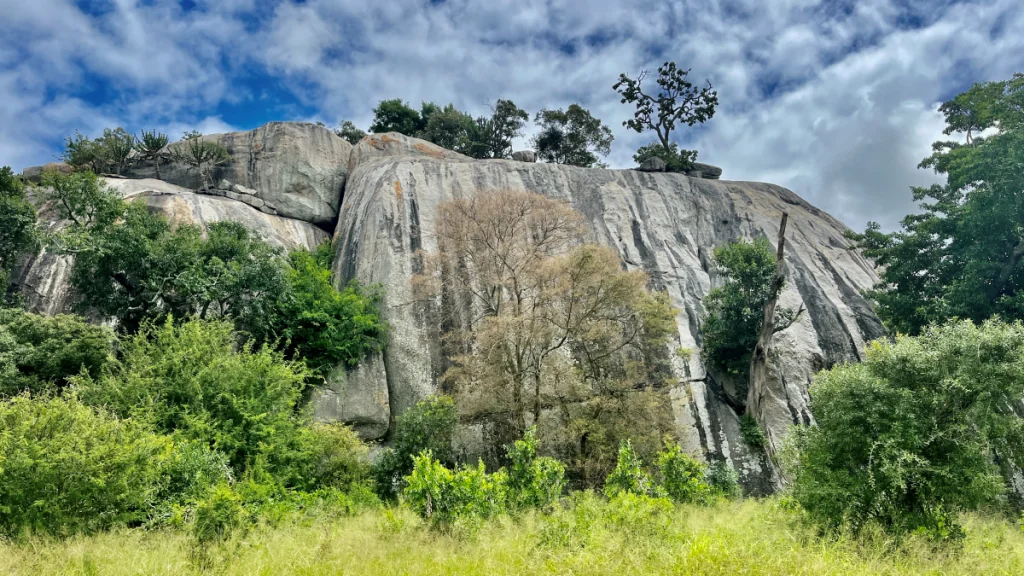
How do you get around the Kruger Park?
In the Kruger Park you get around by car (own or rented), or you follow guided tours in safari cars. Many animals do not care much about cars, so you have a good chance of seeing the animals from the car.
If you want to experience the evening safari, which can be interesting as more/different animals are out and about, you must book a guided tour by safari car/safari bus. You are not allowed to drive your own vehicle after the campsite gates are locked, which they do around 18:00.
You cannot walk in the park on your own as there are wild and dangerous animals, but guided walking tours are organised from some campsites.
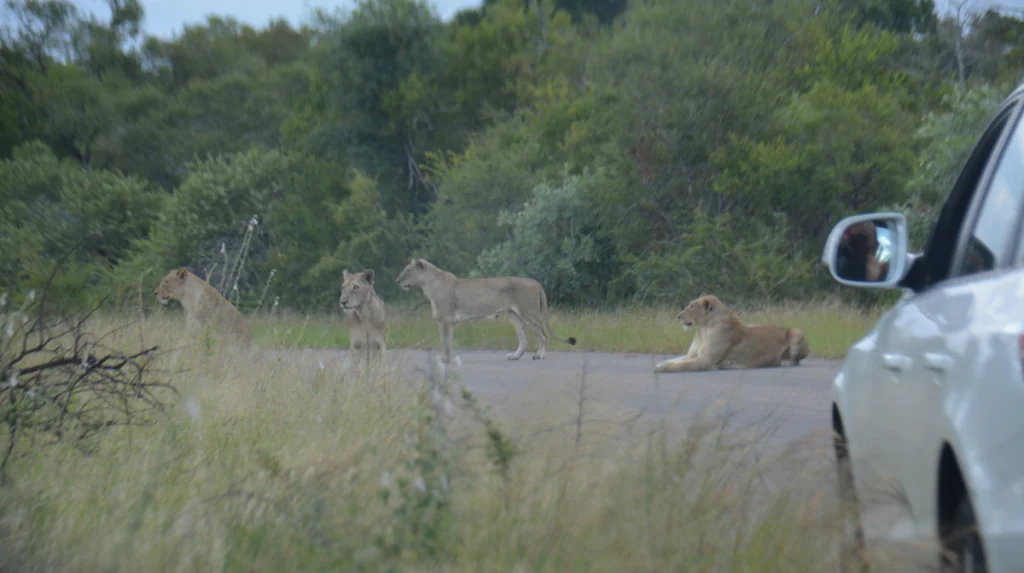
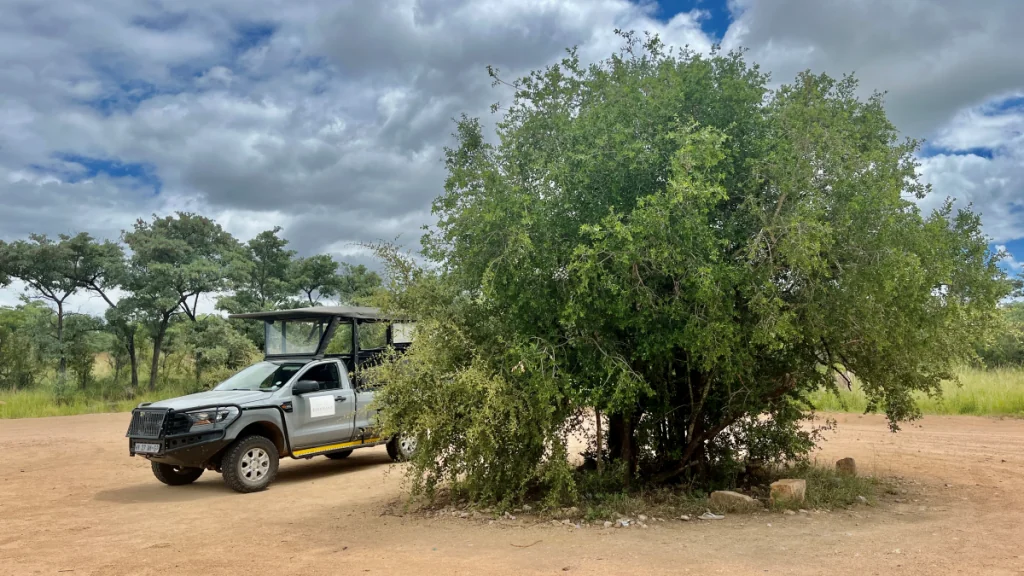
Where and how can you live?
If you want to stay inside the Kruger Park, there are many different 'camps'. You can stay in your own camping vehicle, in a cottage, in a glamping tent or in a hotel. There are also luxurious private lodges. You can find information about different accommodations at sanparks.org.
The camping areas are surrounded by fences, so the big wild animals are kept out. One option is to, like us, come with your own camping vehicle. We saw many caravans (many of them off-road, but also "regular" ones) as well as the occasional motorhome, campervan or car with a roof tent.
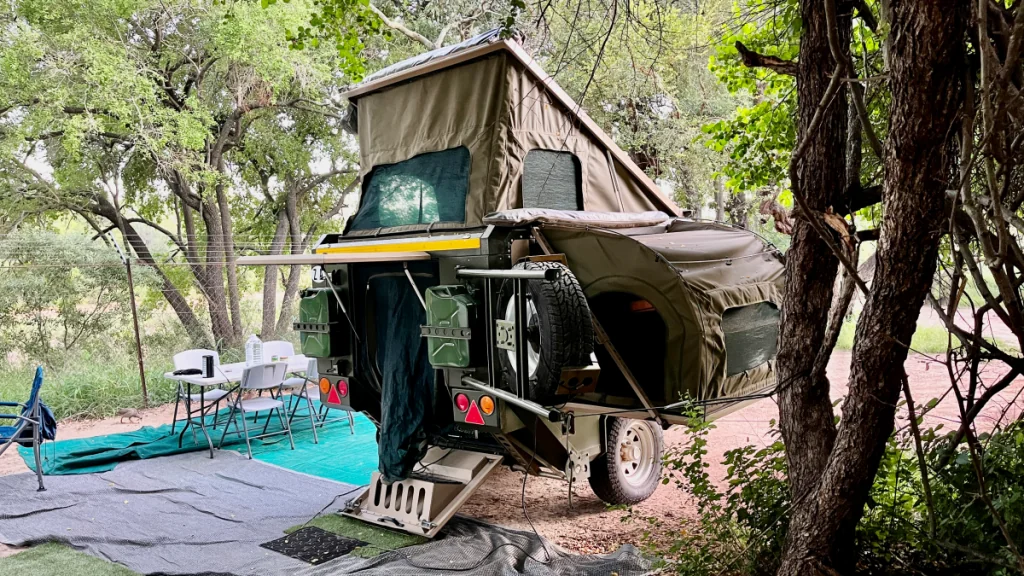
We first stayed at a small and simple campsite, Maroela Camp, where there is nothing more than a service house with toilets and showers, and a small house where you can wash dishes, borrow a hotplate and microwave and fill up with boiling water. It was very cosy, and even though there is a fence, we felt very close to nature.
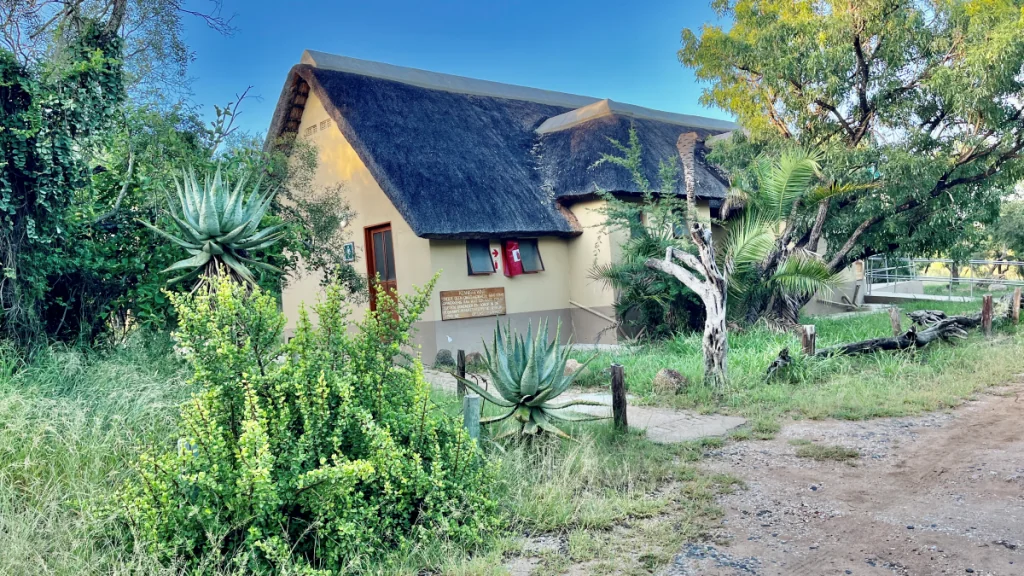
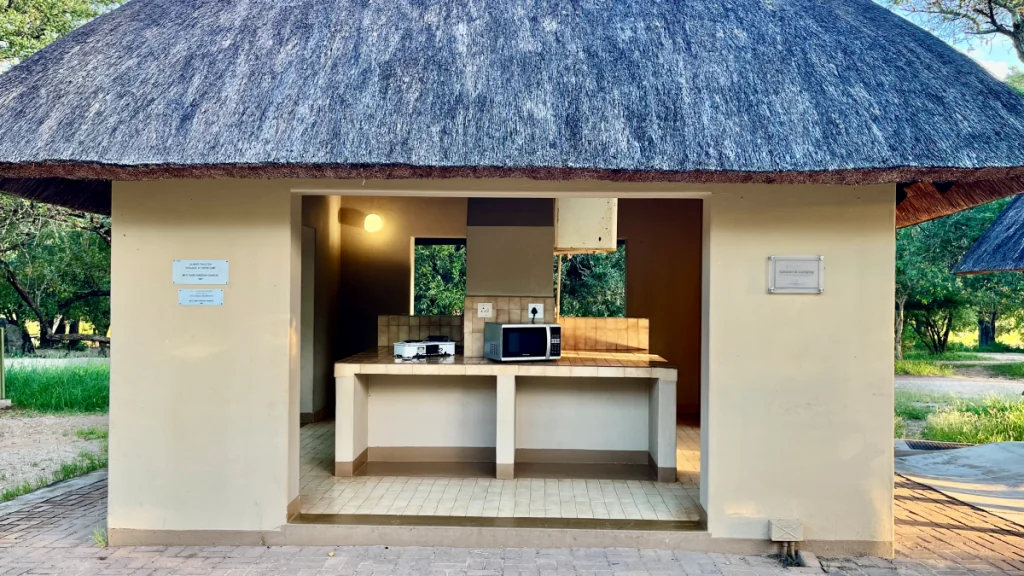
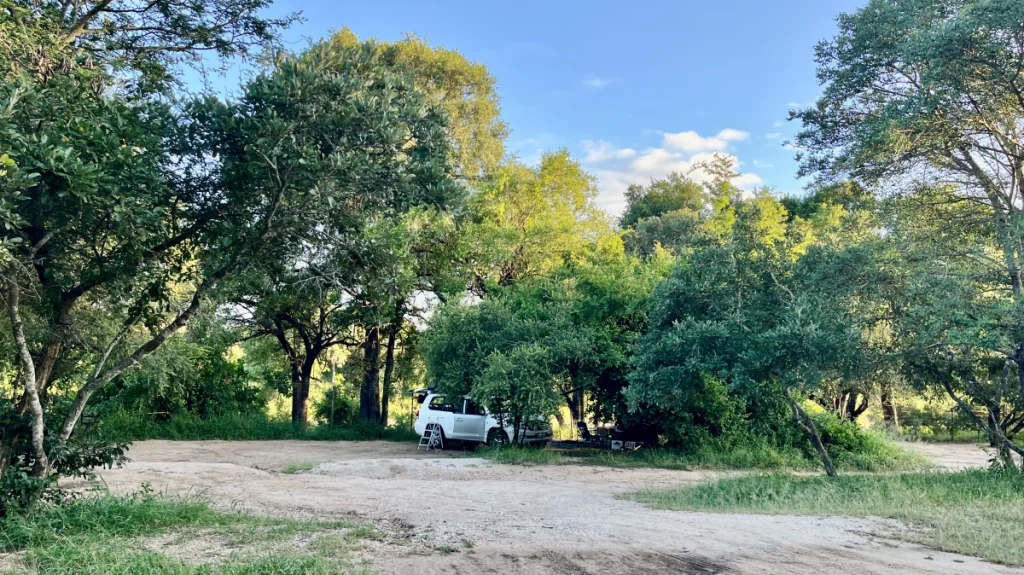
After three nights we moved to a larger campsite, Skukuza Camp, where there is a reception, restaurants, cottages, hotels and guided tours.
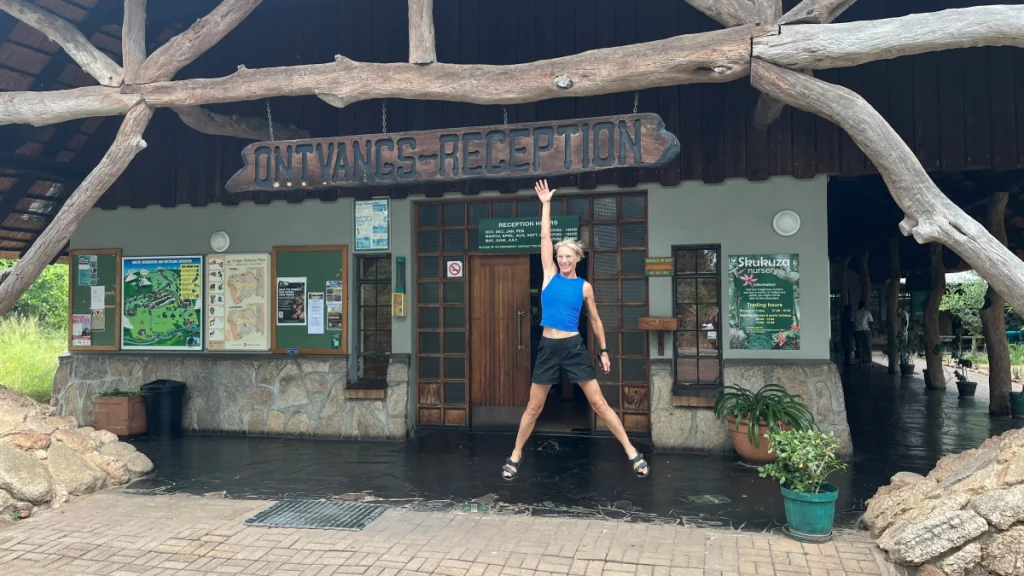
If you want, you can stay in a cabin here, in the African round model. Check beforehand what equipment is available, so you know what you need to take with you.
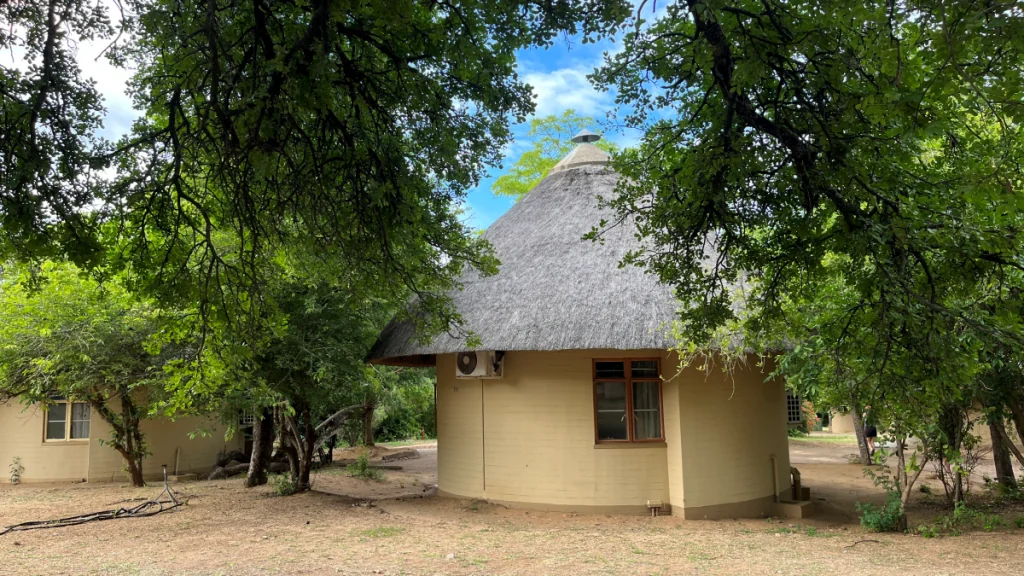
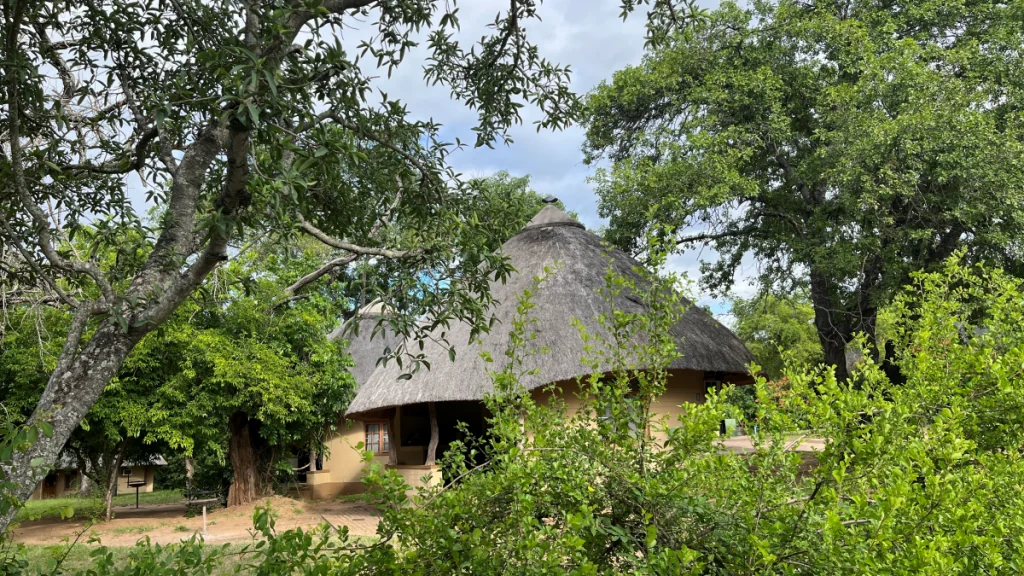
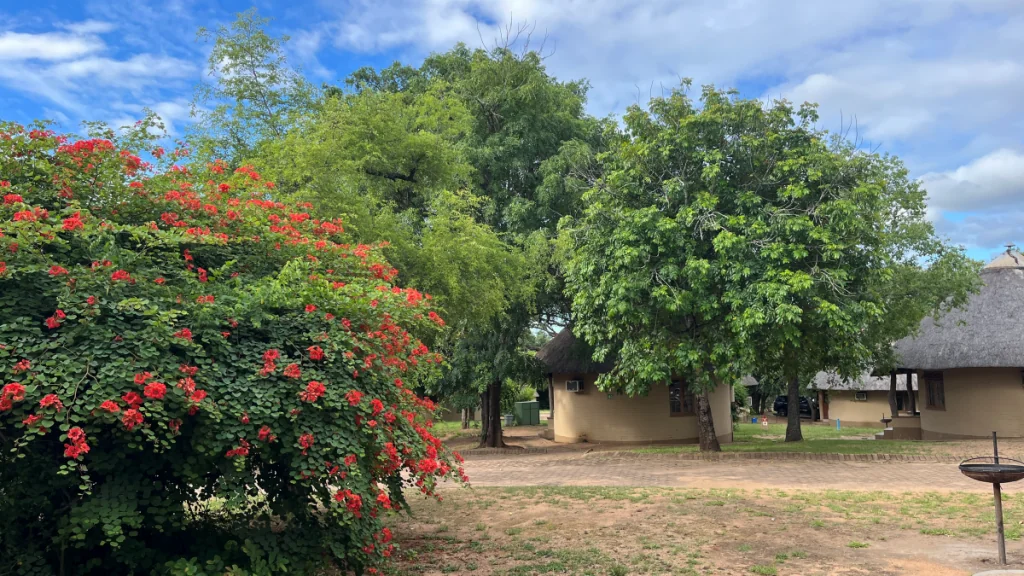
It is also possible to stay in a hotel, and even in a "train hotel". We understand that this is a really luxurious accommodation.
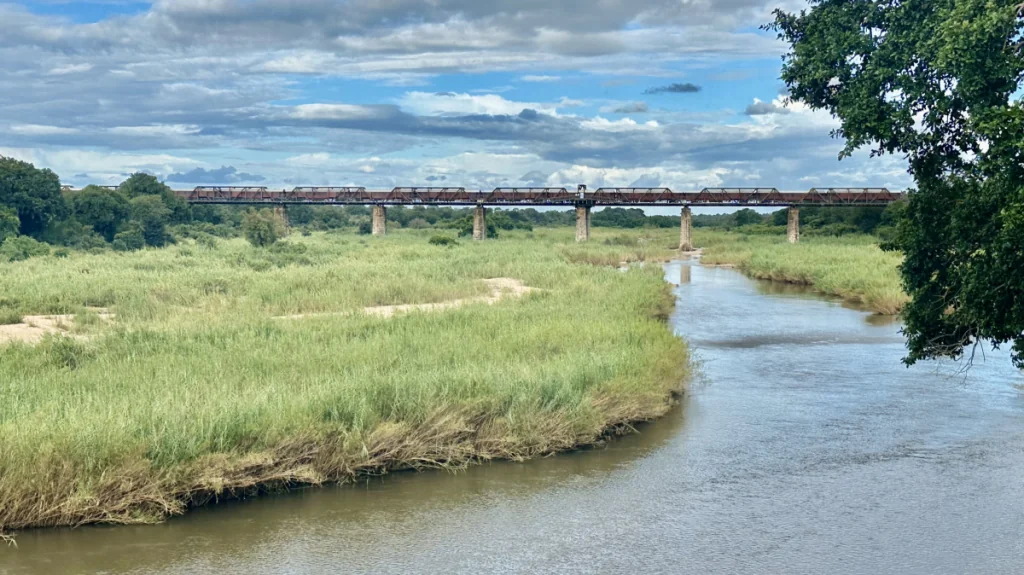
There are also many varieties of glamping. Tents can range from fairly basic to very luxurious, for two people or for a larger family/group.
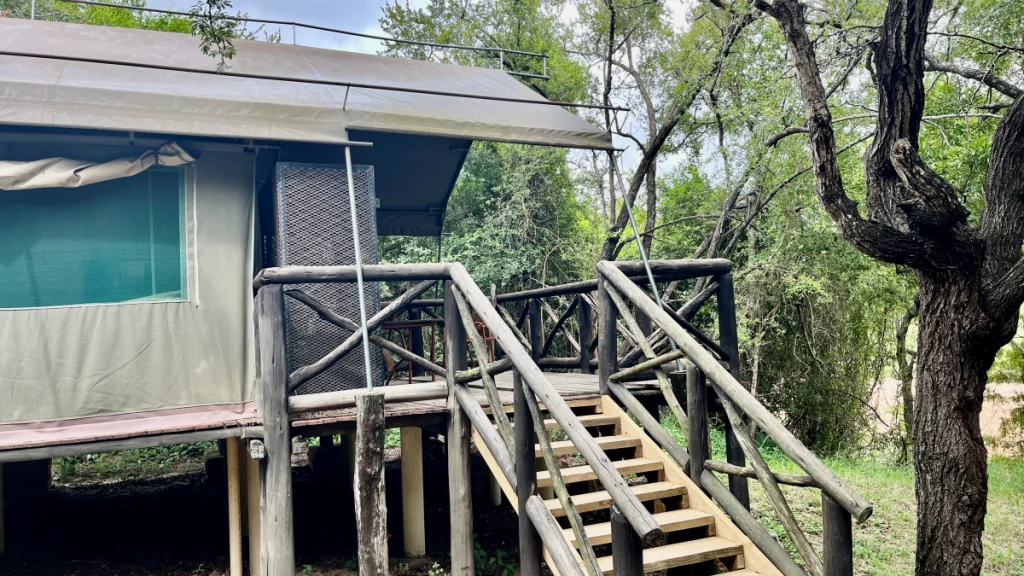
We got the chance to peek inside some glamping tents, in a brand new place named Nkhulu, which plans to open in a few months. These "tents" are for two people and completely fantastic nice with well-equipped kitchen, water toilet and shower. Here you live really luxuriously, and at the same time close to nature.
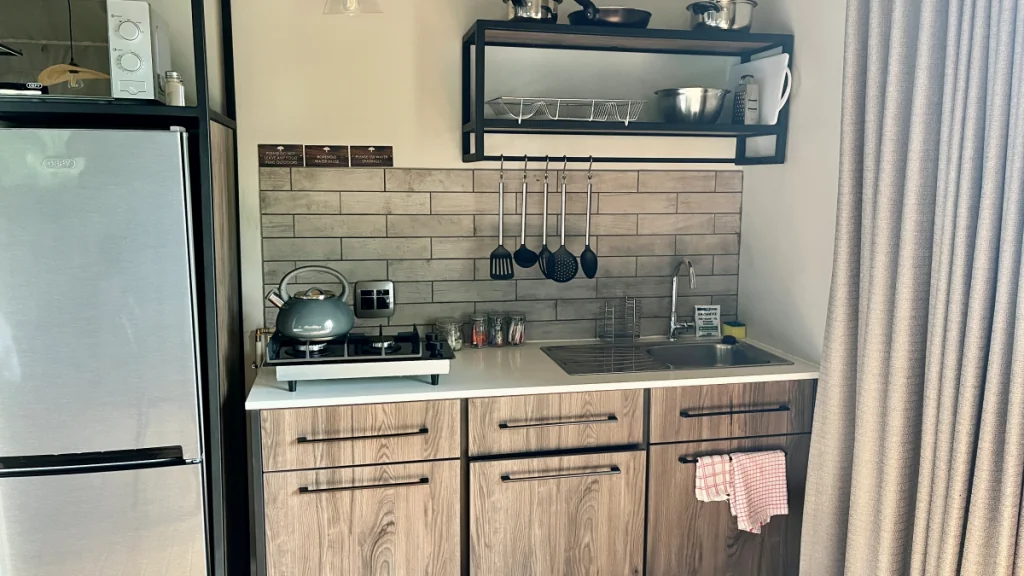
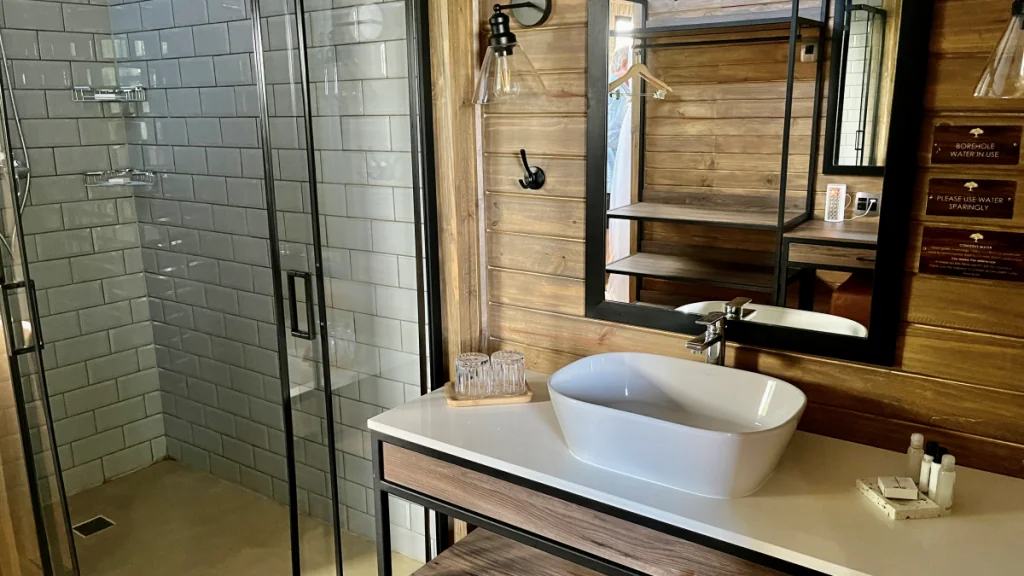
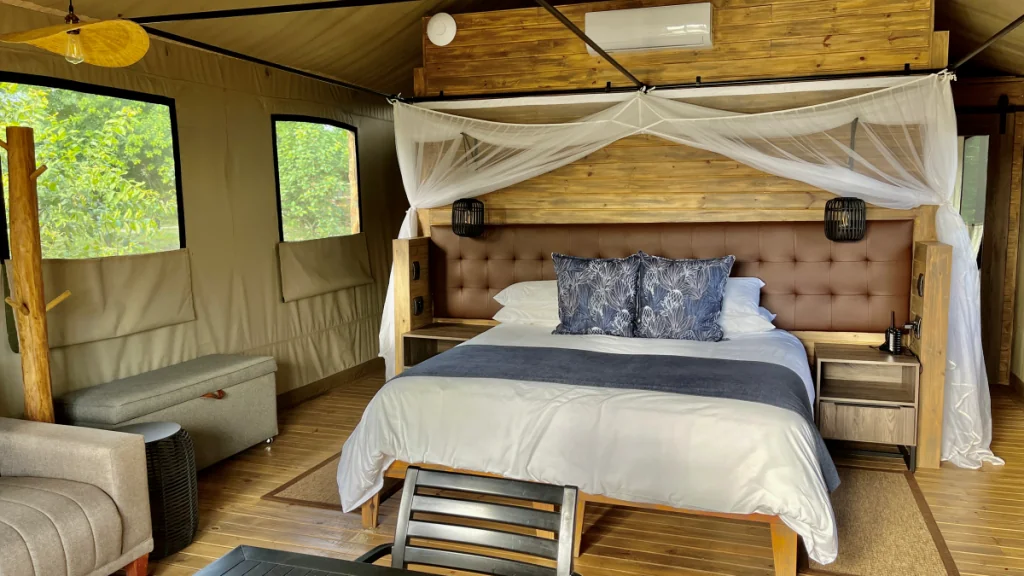
The patio has a barbecue and views of both greenery and water.
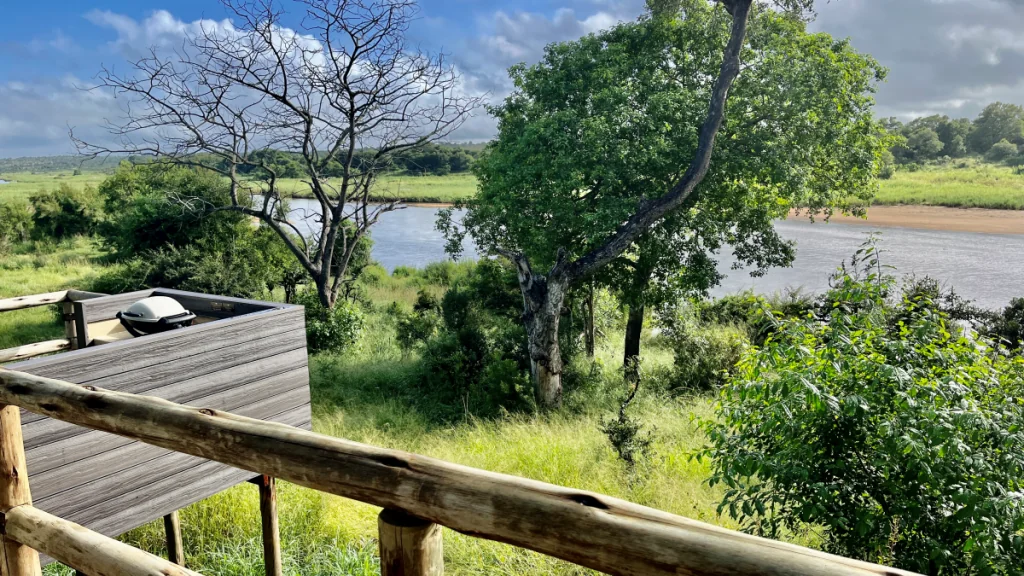
Where and how to eat in the Kruger Park?
If you wish, you can bring your own food and eat in your cabin/tent or at the campsite, where there are barbecue areas. You can also bring a picnic to eat in your car or at designated picnic areas.
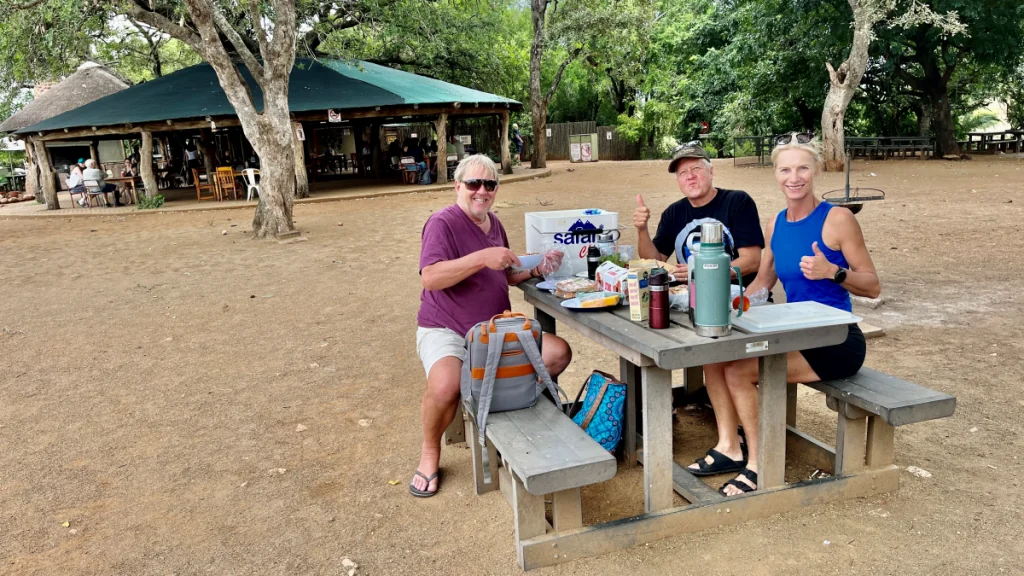
There are also restaurants in various locations, especially in the larger campsites. Get a map to see where everything is!
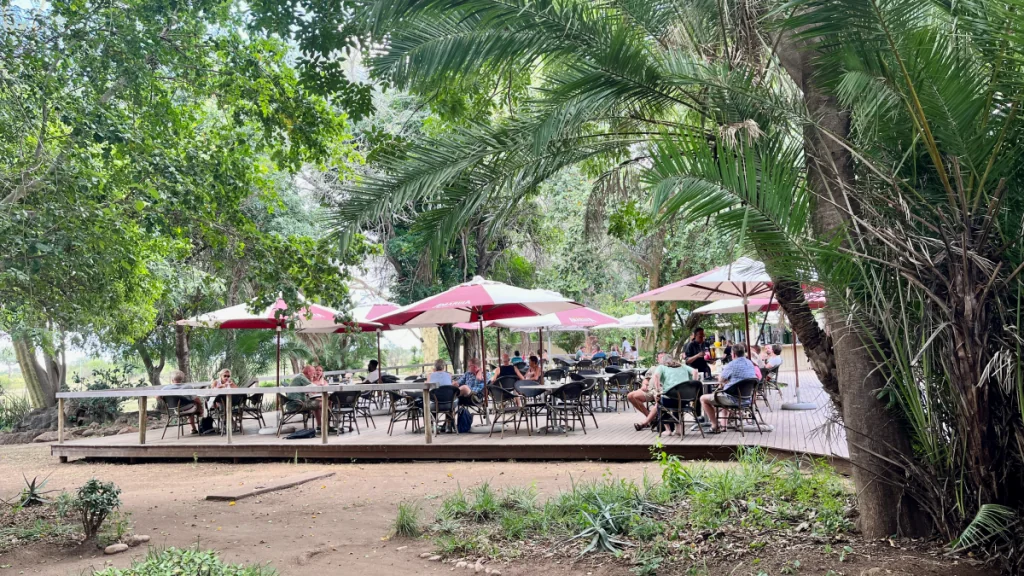
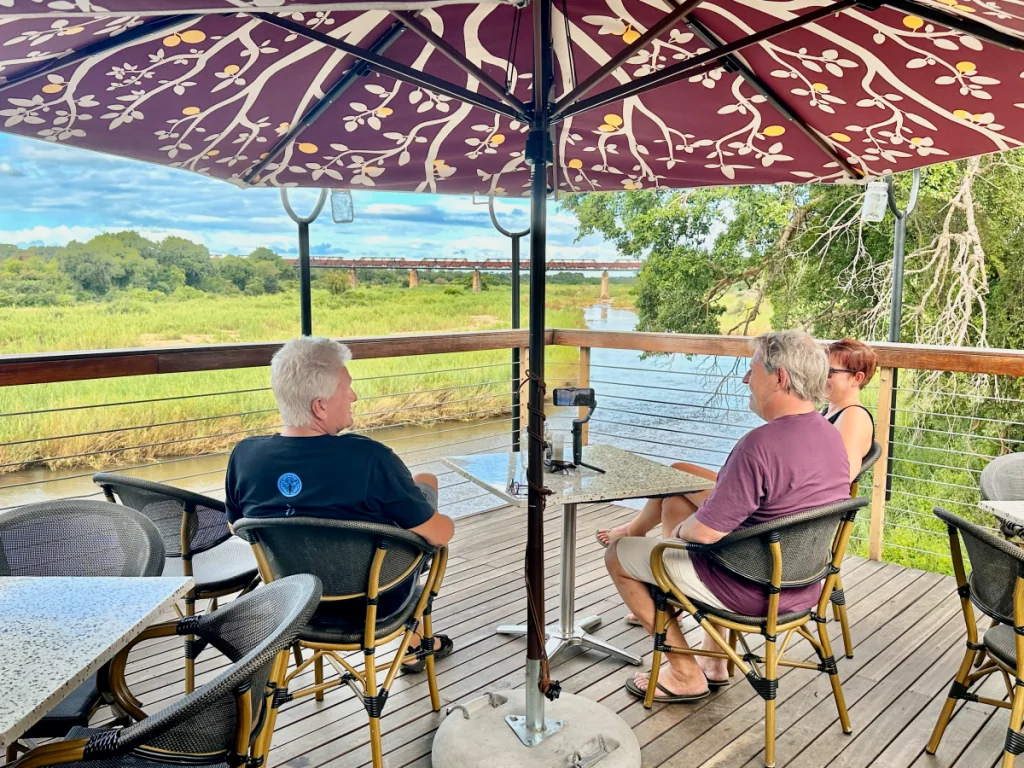
The choice of restaurants can vary, but you will often find hamburgers, meat dishes, omelettes and sandwiches of various kinds.

Are there shops in the Kruger Park?
The larger campsites have shops, known as 'Park Shops'. In these you will find souvenirs, gifts, drinks, snacks, food and various practical items that you may need.
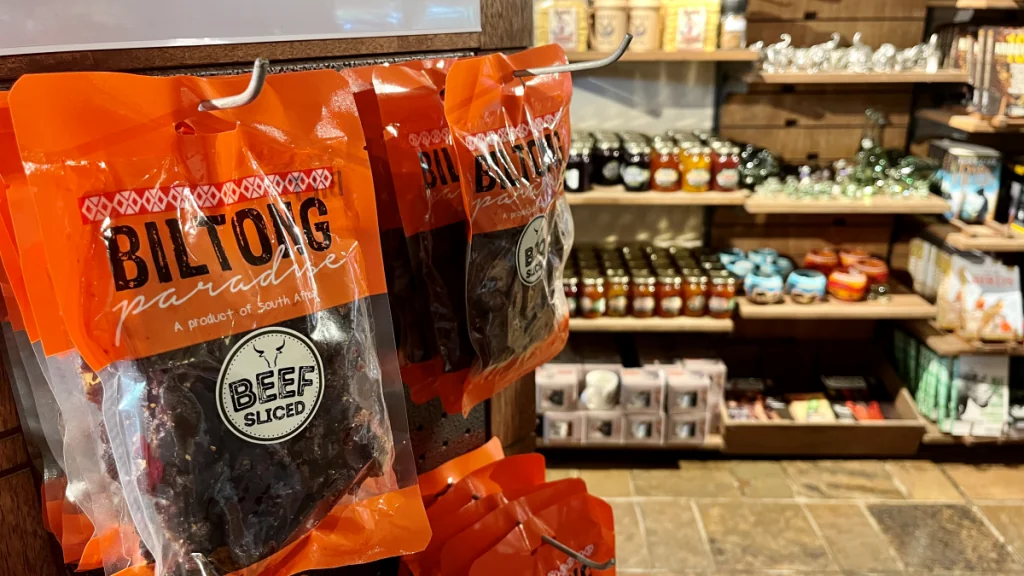
What animals can be seen in Kruger Park?
You can see lots of animals in the Kruger Park. You can see 'the Big Five', i.e. lion, elephant, buffalo, leopard and rhino, but also many, many other animals. The large campsites have 'Sightings Boards', which show which of the big animals have been seen in the vicinity recently...
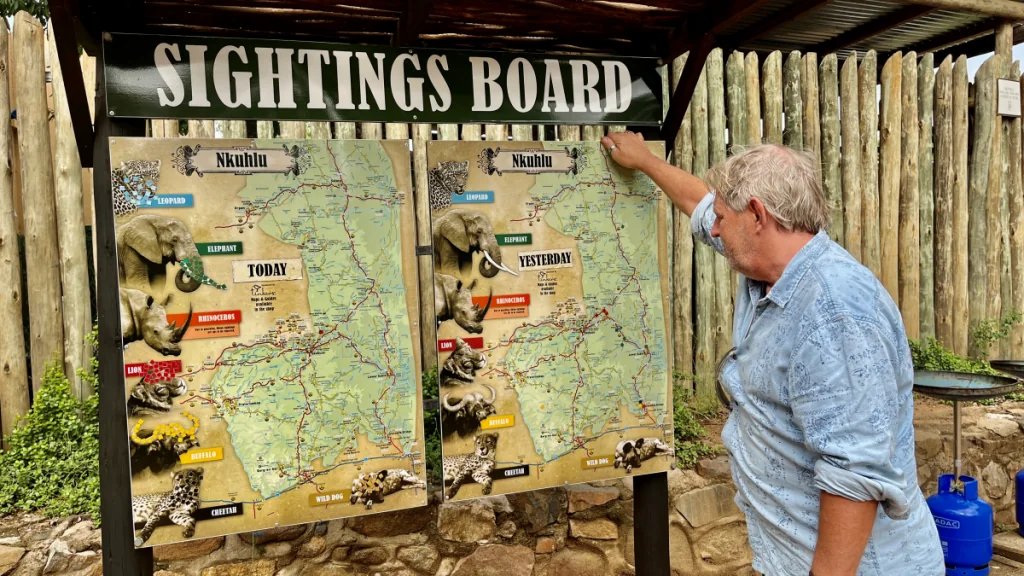
Is it dangerous to visit Kruger Park?
Visiting the Kruger Park is generally safe and secure, as long as you follow the rules and safety procedures. However, you should be aware that nature is full of wild and potentially dangerous animals, such as lions, rhinos and poisonous snakes.
You should stay in the car all the timeexcept on campsites and at specially signposted rest areas/viewpoints. In solitary rest areas, however, you get out of the car at your own risk, as there are no fences. Interestingly, travelling even in an open safari car without a roof is fine, as the animals perceive the car as a 'unit' and do not care about it.
It is important to keep to the speed limit so as not to harm the animals. Some animals (elephants!) can also become irritated if you drive too fast towards them or get too close. Of course, an agitated elephant can be dangerous, so it's good to keep your distance and show respect.
Another potentially dangerous animal is the mosquito, which can carry malaria. Malaria prophylaxis and mosquito repellent are therefore recommended when visiting the Kruger Park.
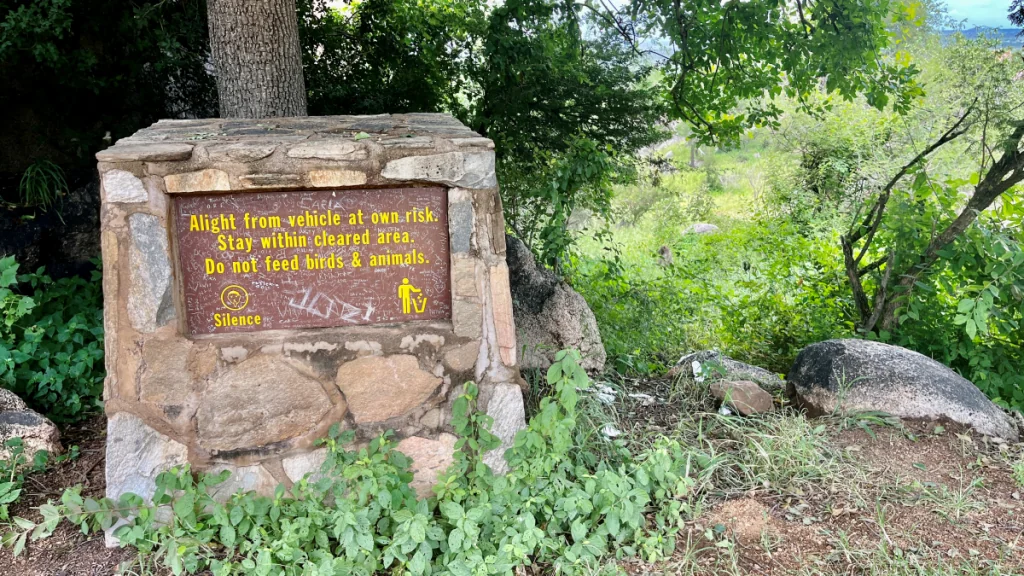
Can you get out of your car in Kruger Park?
You are not allowed to get out of your car in the Kruger Park, except at the fenced campsites and at specially designated sites. These places can be larger rest areas with services, or smaller viewing areas with open spaces and nice views. The animals are likely to avoid these places, but there are no fences so you go out at your own risk.
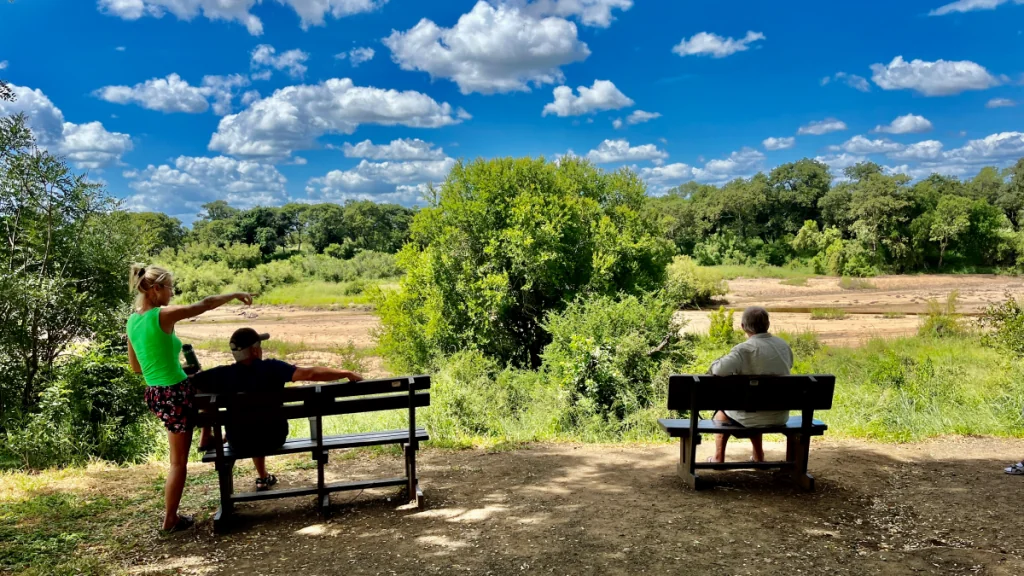
What are the rules in the Kruger Park?
There are some rules to follow in the Kruger Park. Most of these are more or less common sense, and are there to protect nature, the animals and you.
- Stay in the car at all times, except at specifically signposted locations.
- Follow speed limits.
- Have a valid driving licence and do not drive under the influence of alcohol.
- Drive only on roads - off-road driving is not allowed.
- If you are driving vehicles over 4000kg or with more than 25 seats - drive only on paved roads.
- Come back to the campsite at the latest when the gate closes for the day. After this time you may not drive in the park.
- Do not feed the animals.
- Do not pick plants.
- Do not bring pets of any kind.
- Do not litter.
- Do not ride/bike, motorbike, roller skates or skateboard.
- Avoid making noise.
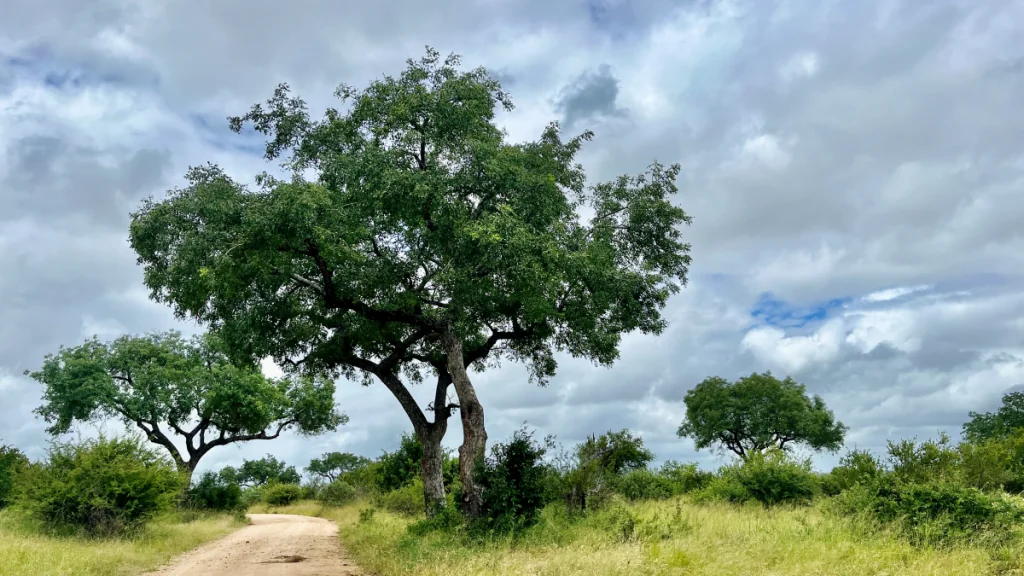
What is the best time of year to visit Kruger Park?
You can visit the Kruger Park at any time of the year. The seasons offer some differences, but the animals are always there.
The South African summer (December - February) is the hottest period, with temperatures of 20-32 degrees. This period is the greenest and there is a good chance of seeing baby animals.
The South African winter (June - August) is the coldest period, with temperatures ranging from 9-26 degrees. This period is drier and the trees are almost leafless, making it easier to see the animals.
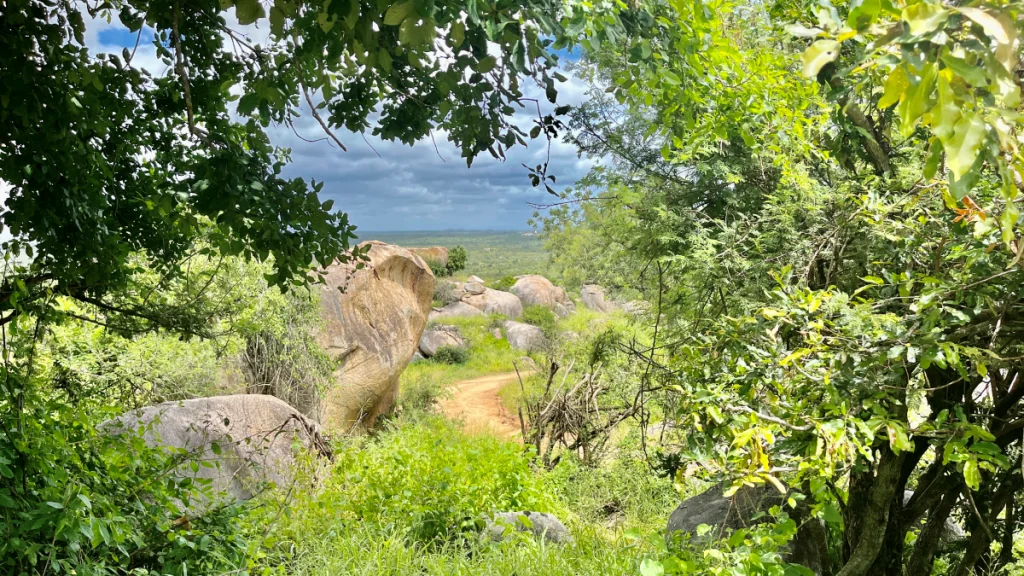
How much does it cost to visit the Kruger Park?
Visiting the Kruger Park can cost very different amounts, depending on how long you stay and how you organise your visit. A big difference can be whether you choose private game reserves with luxury lodges or whether you travel in the public areas, as we did. It also matters, of course, whether you choose a simple accommodation or a more luxurious one.
We bought a "Wild Card", which gives one year of unlimited access to all of South Africa's national parks. This is worthwhile if you stay at least 5-6 nights in the park, or if you are visiting several parks, and the two of us paid a total of about SEK 3200 for this. If you're making a shorter visit, there are other, cheaper options. In addition to this, you need to pay for travel, accommodation, food and any excursions, or buy a package holiday.
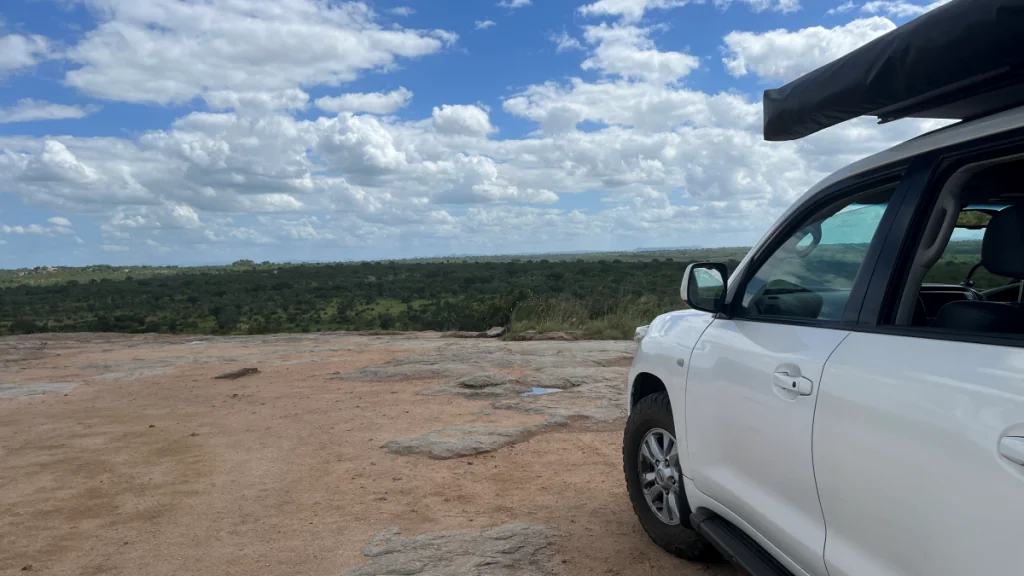
How should you dress for safari?
During the safari itself, you sit in a closed or open car, and you can dress according to the weather. If it's hot, shorts/skirt, t-shirt and sandals or trainers may be appropriate. You may also want to wear sunglasses and a hat or cap.
At certain times of the year, as well as on evening tours, it can be cooler and a thicker jumper or jacket can be useful. Some campsites also offer guided tours on foot, so it's a good idea to wear sturdy shoes, such as hiking boots. Rainwear is also a good idea.
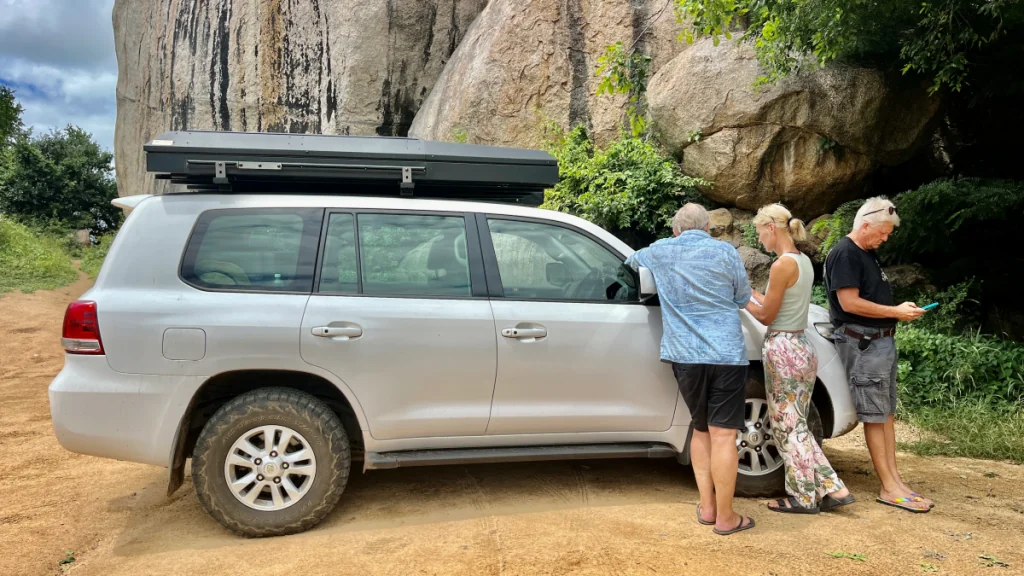
What do you need to pack to visit Kruger Park?
When visiting the Kruger Park, you need to pack weather-appropriate clothing for the time you plan to visit the park. Here you can find a general packing list for travellingwhere you can check what you want to take with you. You also need to check your accommodation, so you know what equipment is available and what you need to take with you. Some things you don't want to forget:
- Mosquito repellent
- Malaria prophylaxis
- Sunglasses, sun hat and sunscreen
- Water
- Flashlight
- Camera, preferably with lens
- Charger, preferably a USB charger that can be used in a car.
- Possible binoculars
- Book on animals and birds (or buy brochure on site)
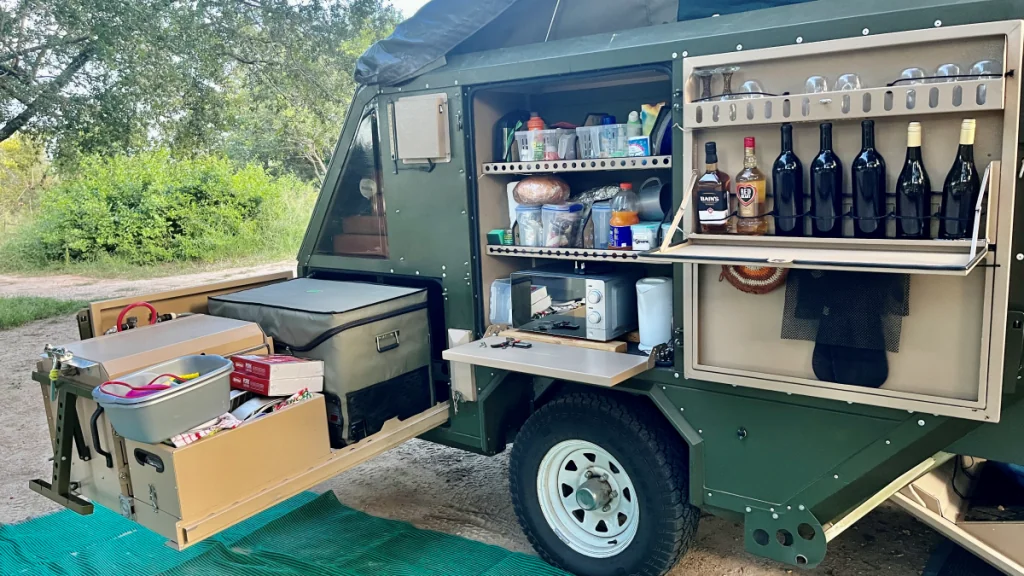
Would you like to visit the Kruger Park in South Africa?
Would you like to visit the Kruger Park in South Africa? Or have you already done so? Is there anything else you're wondering about beyond what we've covered here?


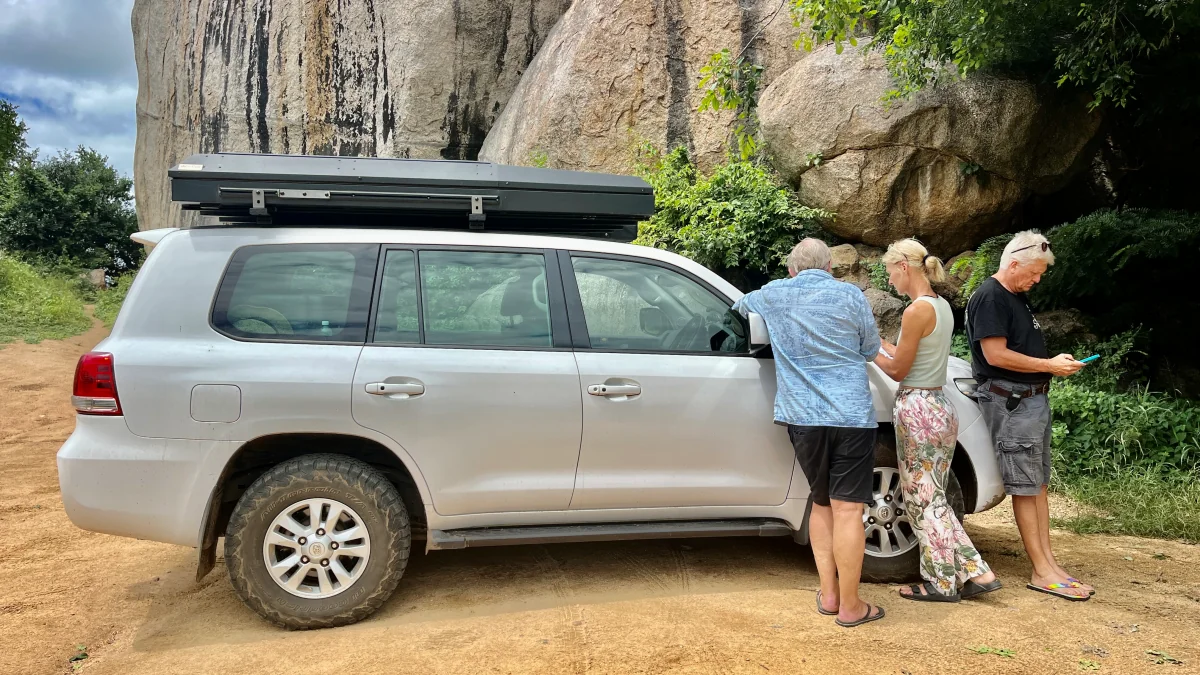






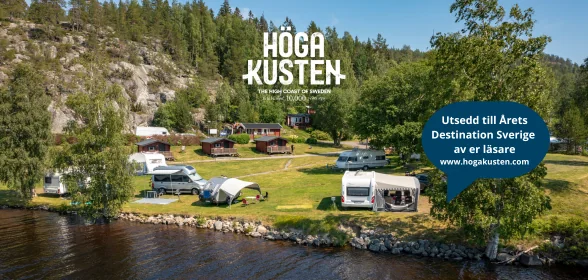


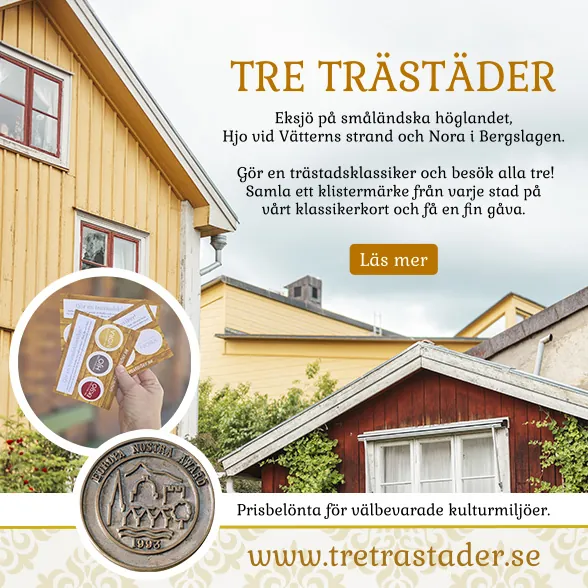
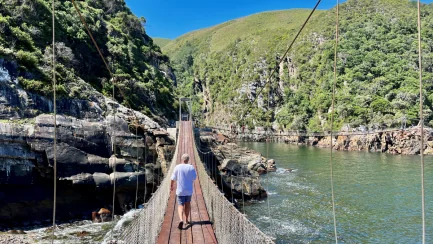
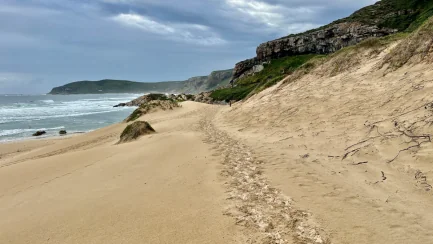
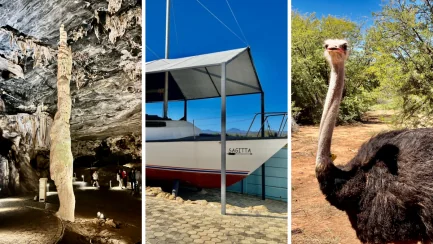
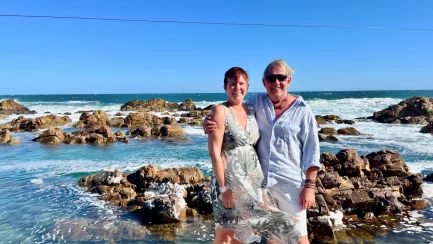
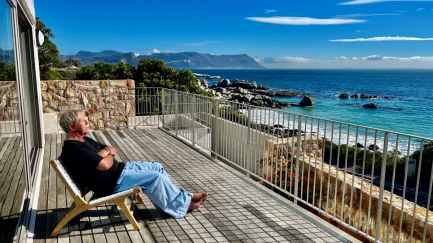
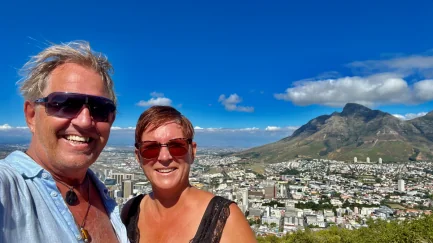



Christian Muda says:
I've never been there, but I'm definitely interested now! Great tips!
11 February 2024 - 11:18
Helena says:
A fantastic experience! 🙂
12 February 2024 - 6:44
bmlarstravellingblog says:
What great posts about the Kruger Park and what great pictures of mammals and birds. We think it's fun that we both with you and a couple of other Instagram accounts have seen pictures of the southern hornbill. Almost ten years ago, our nature guide said that they were highly endangered, but it's wonderful if they have increased in number.
11 February 2024 - 11:28
Helena says:
Glad you like the pictures! Interesting with the horned raven! I do not have a good idea of what the population looks like, but we saw it several times, so it feels positive!
12 February 2024 - 6:46
Ditte says:
Thanks for the interesting post and nice pictures Haven't been here but have on my list to visit southern Africa and one of the parks. Hope it will be done but my body is not so vigorous so it makes the trip tricky.
I have friends who have lived in South Africa and Africa and also suggest visits to Botswana. The travel bloggers BMLARSRESEBLGG wrote a very nice post the other day about their visit to a national park in Botswana that feels attractive. Feel free to look in there. Incredibly beautiful pictures.
Also thinking about Serengitti and some others. Difficult to choose.
Keep up the good work.
11 February 2024 - 14:12
Helena says:
A fantastic experience! And of course there are more beautiful places. We have heard many good things about safaris in Botswana and we have read Britt-Marie's and Lars' blog posts, fantastic pictures!
12 February 2024 - 6:47
BP says:
An absolutely superb and interesting post. You seem to be completely in love with the country, and I understand that very well after reading your posts.
What an adventure. Hope you get to see many more fun things:-)
11 February 2024 - 18:47
Helena says:
South Africa is an amazing country! Then there are challenges and problems here too, we will write about that as well. The nature and animals are outstanding!
12 February 2024 - 6:48
JoY says:
Thanks for all the info and a great post. Just wondering about the car you are travelling with, really a special one, but do you sleep in the part that looks like a sidecar?
11 February 2024 - 21:13
Helena says:
Glad you like the post! It is a caravan (offroad model) that we had connected behind the car. This we slept in! Then we left the caravan at the campsite during the day and drove around in the car.
12 February 2024 - 6:50
Lena in Wales and a bit everywhere says:
Fascinating!
Take care!
12 February 2024 - 7:15